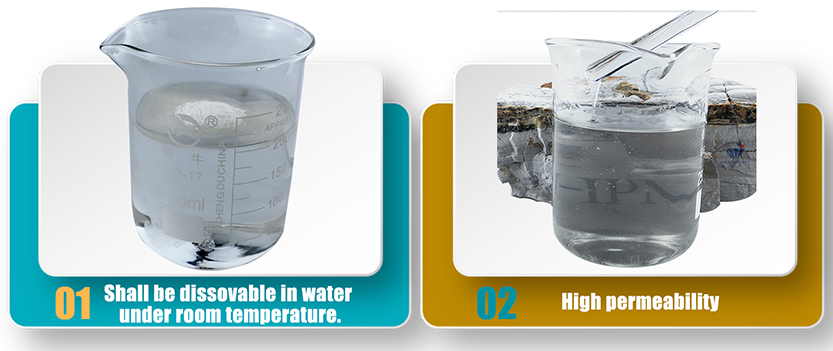
ნოე . 10, 2024 22:42 Back to list
Hydroxypropyl Methylcellulose HPMC Powder Uses and Benefits in Various Applications
Hydroxypropyl Methylcellulose (HPMC) Powder A Versatile Polymer for Various Applications
Hydroxypropyl methylcellulose (HPMC) powder is a widely used cellulose derivative known for its unique chemical and physical properties. This non-ionic polymer is derived from natural cellulose and is synthesized through the modification of cellulose with propylene oxide and methyl chloride. HPMC has gained significant attention across diverse industries, including pharmaceuticals, food, construction, and personal care, largely due to its versatility, biodegradability, and non-toxic nature.
Pharmaceutical Applications
One of the most critical applications of HPMC is found in the pharmaceutical industry. It is commonly used as an excipient in drug formulations, serving multiple roles. HPMC acts as a binder, helping to hold tablet ingredients together, ensuring uniformity in dosage. Additionally, HPMC is utilized as a film-forming agent in coatings for tablets and capsules, which can enhance the stability of active pharmaceutical ingredients (APIs) and control the release of the drug into the body. The polymer’s viscosity can be manipulated depending on its grade, allowing formulators to tailor drug release profiles effectively, making it ideal for controlled-release medications.
In ophthalmology, HPMC is employed in eye drops and other ocular formulations. Its ability to retain moisture and provide lubrication makes it an excellent choice for treating dry eyes and enhancing the comfort of contact lens wearers. Furthermore, due to its biocompatibility, it is often used in surgical applications, including as a protective agent preventing tissue adhesion.
Food Industry Uses
In the food sector, HPMC is appreciated for its thickening, stabilizing, and emulsifying properties. It is commonly found in gluten-free products as a binding agent that helps improve texture and overall product quality. When added to dough, HPMC can enhance elasticity and retain moisture, contributing to a better mouthfeel. The use of HPMC as a food additive is regulated, and it is recognized by various food safety authorities as a safe ingredient.
Moreover, HPMC is utilized in the production of sauces, dressings, and ice cream, where it serves to maintain viscosity and prevent the separation of ingredients. Its ability to form gels makes it a popular choice in the formulation of low-calorie and reduced-fat food products, providing a satisfying texture without the extra calories.
hydroxypropyl methylcellulose hpmc powder

Construction Industry Applications
HPMC has become a standard additive in the construction industry, particularly in the formulation of cement-based products. When incorporated into mortars, plasters, and tile adhesives, HPMC enhances workability, improves water retention, and increases the adhesion properties of these materials. Its water-retaining capabilities allow for extended open time in application, enabling builders to work more efficiently without compromising the integrity of the mixtures.
Additionally, HPMC contributes to the flexibility and durability of construction materials, reducing cracking and enhancing overall performance. Given the growing demand for sustainable building materials, the use of biodegradable polymers like HPMC is becoming increasingly important in eco-friendly construction practices.
Personal Care and Cosmetics
HPMC is also evident in the personal care and cosmetics industry, where it serves as a thickener, emulsifier, and film-forming agent in products such as lotions, creams, and shampoos. Its ability to provide a smooth texture makes it a popular ingredient in skincare formulations, enhancing the sensory experience of the product. Moreover, HPMC is used in hair care products, promoting better adherence of active ingredients to the hair shaft, thus improving efficacy.
Conclusion
In summary, hydroxypropyl methylcellulose (HPMC) powder is a versatile polymer that plays a significant role across multiple industries. Its unique properties, such as viscosity control, moisture retention, and film-forming ability, make it a valuable ingredient in pharmaceuticals, food products, construction materials, and personal care items. With the ongoing advancements in research and technology, the potential applications for HPMC are likely to expand, solidifying its status as a key component in the formulation of a wide variety of products that enhance quality, efficacy, and user experience. Its non-toxic and biodegradable nature positions it as an ideal choice for sustainable practices across these diverse fields.
-
Unlocking the Benefits of HPMC Products: A Gateway to Versatile Applications
NewsAug.07,2025
-
Unleashing the Potential of HPMC Ashland: A Comprehensive Look
NewsAug.07,2025
-
Tile Bonding Cellulose: The Key to Superior Adhesion and Durability
NewsAug.07,2025
-
Hydroxypropyl Methylcellulose Powder: The Versatile Component in Modern Pharmaceuticals
NewsAug.07,2025
-
Hydroxyethyl Cellulose: The Versatile Solution for Various Industries
NewsAug.07,2025
-
Hydroxyethyl Cellulose (HEC): The Versatile Polymer for Various Applications
NewsAug.07,2025







